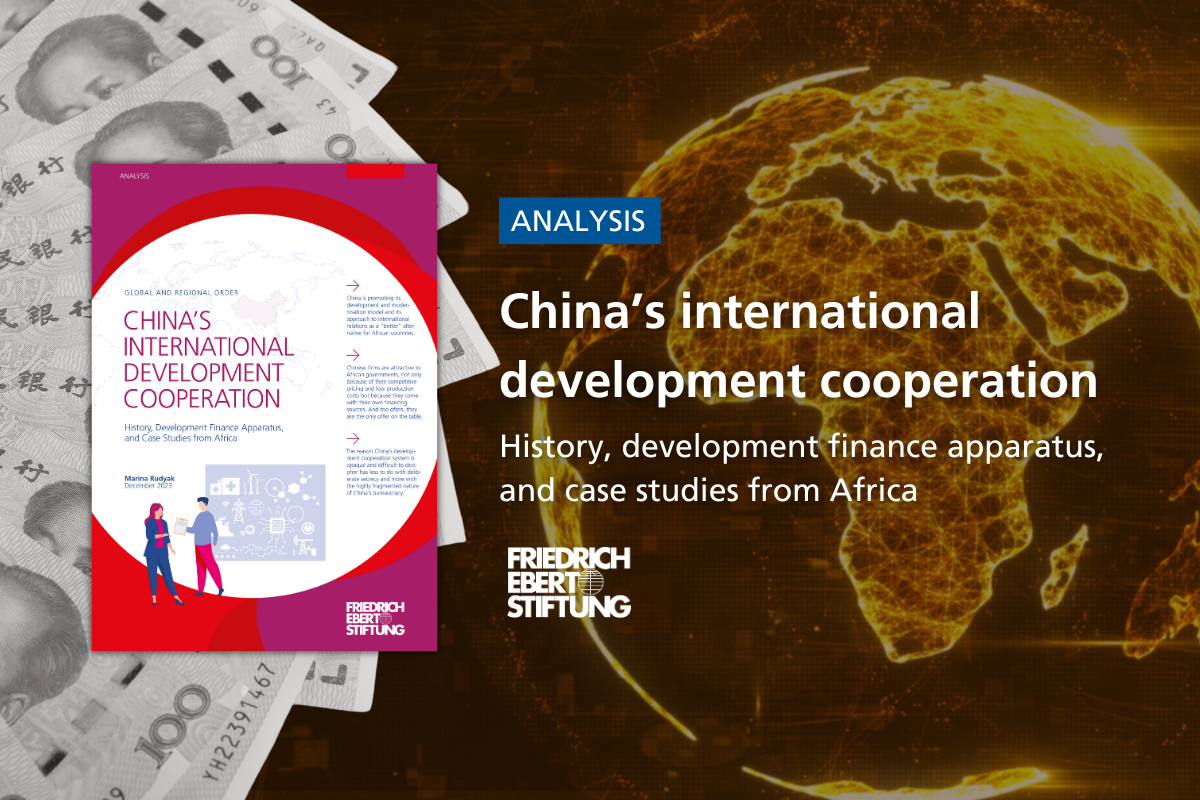Welcome to the first issue of our China and Global Development round-up for 2024. This month, I have hand-picked a selection of resources that explore China’s influence on the global stage, its role as an infrastructure financier, and trends in Chinese outward investment.
China in the international system
Read 1: How does China engage with Bretton Woods institutions?
China’s rise to the position of the world’s second-largest economy has gone hand in hand with an increased presence in the Bretton Woods System and its key institutions – the International Monetary Fund (IMF), the World Bank Group and the World Trade Organization (WTO). A new working paper published by the Boston University Global Development Policy Centre attempts to quantify this increased footprint. The authors provide data on the renminbi’s weight in the IMF Special Drawing Rights basket and China’s voting quotas at the IMF. They also look at China’s contributions to multilateral development banks and consider its trade and investment agreements signed with countries around the world. Despite some data gaps, the authors identify clear evidence of China’s rise in the Bretton Woods System.
Read 2: China’s development cooperation system
Understanding the Chinese aid system and how to engage with it can be complex. A new study by Marina Rudyak discusses China’s approach to development cooperation and its rising presence in Africa.
The study outlines the history of Chinese development cooperation and maps China’s highly complex aid and development financing bureaucracy. It also looks at three case studies (health, infrastructure and smart cities) of Chinese development cooperation in Africa. The study recommends that donors refrain from viewing Africa through the lens of strategic competition with China. Instead, they should focus on sustainable development and improving the lives of African citizens. They should not only view China as a competitor in Africa, but also as a potential partner, and engage where it makes sense.
Infrastructure and its finance
Read 3: Chinese global infrastructure
Another short book of the excellent ‘Elements in Global China’ series was released at the end of last year: ‘Chinese Global Infrastructure’ by Austin Strange. This book reveals that Chinese global infrastructure development is an older and more persistent phenomenon than popular accounts suggest. By tracing the history of Chinese infrastructure development since the beginning of the PRC, the author shows that the Chinese government has continuously financed and constructed high-profile infrastructure projects across the Global South amid shifting political and economic priorities. The author also highlights that, while these projects serve both economic and soft-power goals, the latter can be difficult to achieve and are not fully under China’s control.
Read 4: The role of Sinosure
My ODI colleague Yunnan Chen, together with Zongyuan Zoe Liu, wrote a report on Sinosure, a state-owned provider of export and credit insurance services for Chinese exporters and importers. The report discusses Sinosure’s often overlooked but pivotal role in the Belt and Road Initiative. By underwriting Chinese capital to low- and middle-income countries, Sinosure makes otherwise unbankable projects feasible. The report shows how, over time, Sinosure’s risk appetite decreased, in line with the wider slowdown of Chinese overseas lending.
Chinese investment
Read 5: Chinese FDI to Latin America
The Dialogue published a report which looks at the latest trends of Chinese foreign direct investment (FDI) to Latin America and the Caribbean. In recent years, Chinese FDI to this region has shown a notable downward trend with greenfield investment tapering and mergers and acquisitions (M&A) dropping more sharply. The authors also note a shift in investment flows toward sectors such as telecommunications, fintech, and energy transition that are broadly innovation-related, but also a critical part of China’s economic growth strategy. Traditional hard infrastructure has been replaced by this “new infrastructure” which will be critical for both China and Latin America.
Read 6: Green investment and soft power
Investing in renewables isn’t just good for the environment – it could have other benefits too. A study by Chris Nedopil and Mengdi Yue looks at Chinese overseas energy investment and shows that increased investment in green energy improves the average public perception of China. In contrast, non-green energy investment by Chinese companies (like coal, gas, and oil), even when contributing to economic and employment growth, does not have such effects. Therefore, investing in renewables has positive non-monetary returns and can improve bilateral relationships.

